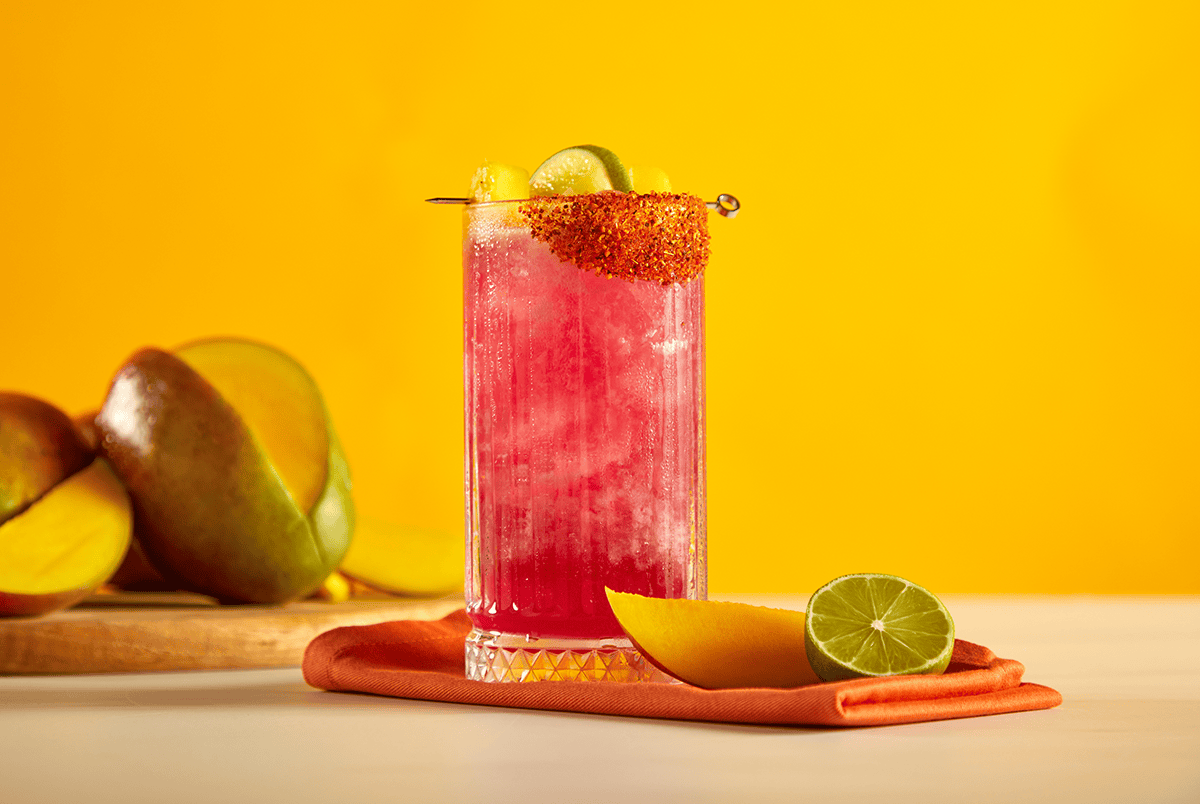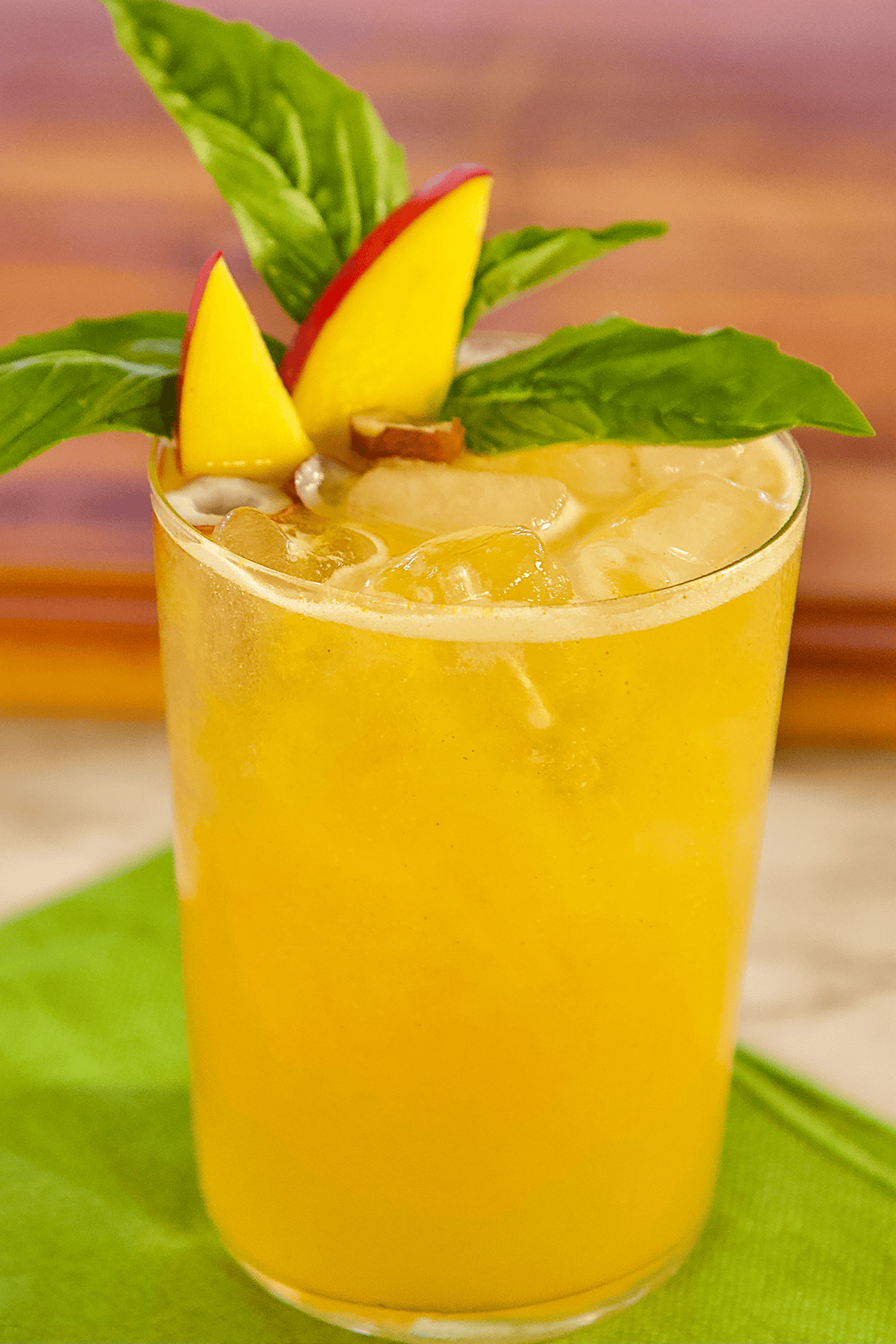
SPONSORED CONTENT
Put Mango in the Mix
Uncover the breadth of opportunities to bring more mango to the bar and beyond
SPONSORED CONTENT
Put Mango in the Mix
Uncover the breadth of opportunities to bring more mango to the bar and beyond
By Flavor & The Menu
August 2, 2024
By Flavor & The Menu
August 2, 2024
“Tropical is traditional” when it comes to the enduring perception many operators and their customers hold in regard to mango-based beverages. And why not? “First and foremost, there’s that radiant color that screams spring and summer,” concedes Tony Pereyra, bar and beverage specialist, The Spirits in Motion, and a longtime consultant for the National Mango Board. “It’s fresh. It’s exotic. It represents escape.” But Pereyra resists the notion that mango drinks be consigned exclusively to tropical profiles and pretty paper umbrellas.
“There’s so much you can do with complementary ingredients and spices to warm up mango in fall and winter and make it a year-round fruit for beverages,” he says. “For example, cardamom, whiskey—these pairings with mango will take you someplace very different.” Exploring flavor play with different elements will help beverage customers look at mango in a new light.
From buzz-worthy cocktails to low-ABV spritzes to non-alc teas, mango offers great potential to beverage developers working across the foodservice industry.

Mango is a great player in trending margarita riffs, such as this Mango Prickly Pear Margarita.
SPIRITED TAKES
Pereyra, who has mango growing in the backyard of his South Florida home, cites two varieties as his preferences for beverage applications. The Honey has a smooth, firm flesh with no fibers and a vibrant yellow color. “I love them for making purées and blending up drinks,” he says. Pereyra turns to the Kent mango for dicing, muddling and garnishes. Green-skinned Kent mangos have a juicy, tender flesh with limited fibers and the fruit’s signature tropical aroma.
Mango is a versatile fruit that shines in a wide variety of cocktails and mixed drinks. Tequila is probably the most popular pairing, says Pereyra. Not only does it ride the all-things-Mexican trend, but “That sweet-heat combination always seems to be a winner.” Rum pairings also will lean to the tropical, but when mixed with gin, mango conveys botanical, floral notes.
Adding mango to whiskey has potential for fall/winter drinks, he says, although with the right elements, it can be a timely addition to spring menus. One example, is the Mango Whiskey Smash cocktail, a muddle of fresh-cut mango cubes, fresh mint, citrus and simple syrup, mixed with bourbon, smashed and then shaken.
In tapping global flavor systems, Mexico dominates, but Pereyra also sees some experimentation with Southeast Asian profiles. This includes India (think the non-alc lassi), as well as Thailand and Pacific Islands, with mango drinks featuring coconut and pineapple as complementary fruits. “There’s been a real resurgence of this in the cocktail world,” he says, pointing to the revival of Tiki concepts. Application of Caribbean flavors, such as Jamaican jerk seasoning, are another way contemporary cocktails feature mango.
Indeed, different herbs, spices and seasoning blends work very effectively with mango. Cardamom may be best-known, but Pereyra also points to opportunities with nutmeg and cinnamon. “Chinese five-spice and mango is fantastic,” he insists. Meanwhile, cilantro, sage and even thyme lend more of a savory flavor to drinks. The sour taste of tamarind provides an intriguing complement to the sweetness of mango.

Playing to mango’s popularity as a tropical refresher is a savvy strategy for cocktails and mocktails alike, such as this Mango Island Cooler.
BLISS OVER BOOZE
Pereyra is particularly jazzed about the opportunities for using mango in low-ABV and non-alc beverages. “I love cocktails, but the daytime iced beverage market today is magnificent,” he notes. “I’m seeing a lot of development success in mango-forward refreshers and smoothies. Teas are also very popular right now.” He points to the mango drinks that have earned menu positions at some very large quick-serve brands. “There’s just a whole lot more mango out there right now.”
Mango is also a go-to for beverages that straddle the cocktail/non-alc divide. “We’re seeing more opportunities in spritzes and brunch drinks, where, for example, mango can be substituted for orange juice,” he notes. “It also works well in a wine- or champagne-based cocktail.” The shrub is another rising star with mango potential. In fact, Pereyra and the National Mango Board will debut a Mango Summertime Spiced Shrub mocktail at the Flavor Experience later this month. It features fresh mango, white balsamic-mango-pineapple-guajillo pepper shrub, lemon and agave served over fresh ice and topped with a non-alcoholic beer.
Also on tap for the Flavor Experience is a bottled Fresh Mango All-Day Booster made with fresh mango, raspberry, coconut water and ginger.
 Photo Credit: Carlos Garcia
Photo Credit: Carlos Garcia MAXIMIZE THE MAGONADA
While the frozen, blended mangonada is an iconic street food beverage in Mexico, its presence on mainstream American menus—and even some K-12 schools—is much more recent and exemplifies the embrace of mango by consumers of all ages. A sweet-savory combination of mango, chamoy and Tajín, the mangonada is also a visual stunner.
Pereyra is seeing its influence play out on both the cocktail and non-alc sides of the beverage menu. For example, as margarita translations are also proliferating, a mangonada margarita is a natural consequence of two trends. “Swap the tequila with mezcal to add a smoky element to the sweet,” he suggests. Or leverage the “Bloody Mary effect” by going crazy with garnishes to add the “wow” factor. “Add a scoop of diced mango on top with a sprinkle of chamoy for a fresh finish. Or use a thick boba straw wrapped in Tajín and candy.”
Indeed, use of fresh mango as a garnish for both cocktails and mocktails—even those that don’t include the fruit within the drink itself—is a proven strategy for boosting flavor, textural interest and visual appeal. That brilliant color is virtually guaranteed to convey added value.
Mango-based beverages have come a long way in the last decade, but the runway for invention remains long and enticing. Menu developers can capitalize on the fruit’s growing popularity across all dayparts from January through December. “Non-alc or low-ABV drinks for brunch and lunch, followed by great cocktails for happy hour and dinner,” says Pereyra. “So many channels for innovation!”
Click here for more mango menu inspirations, product information, handling tips and to sign up for our newsletter.







